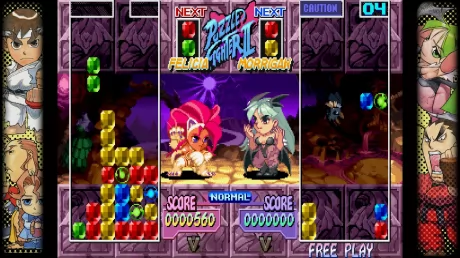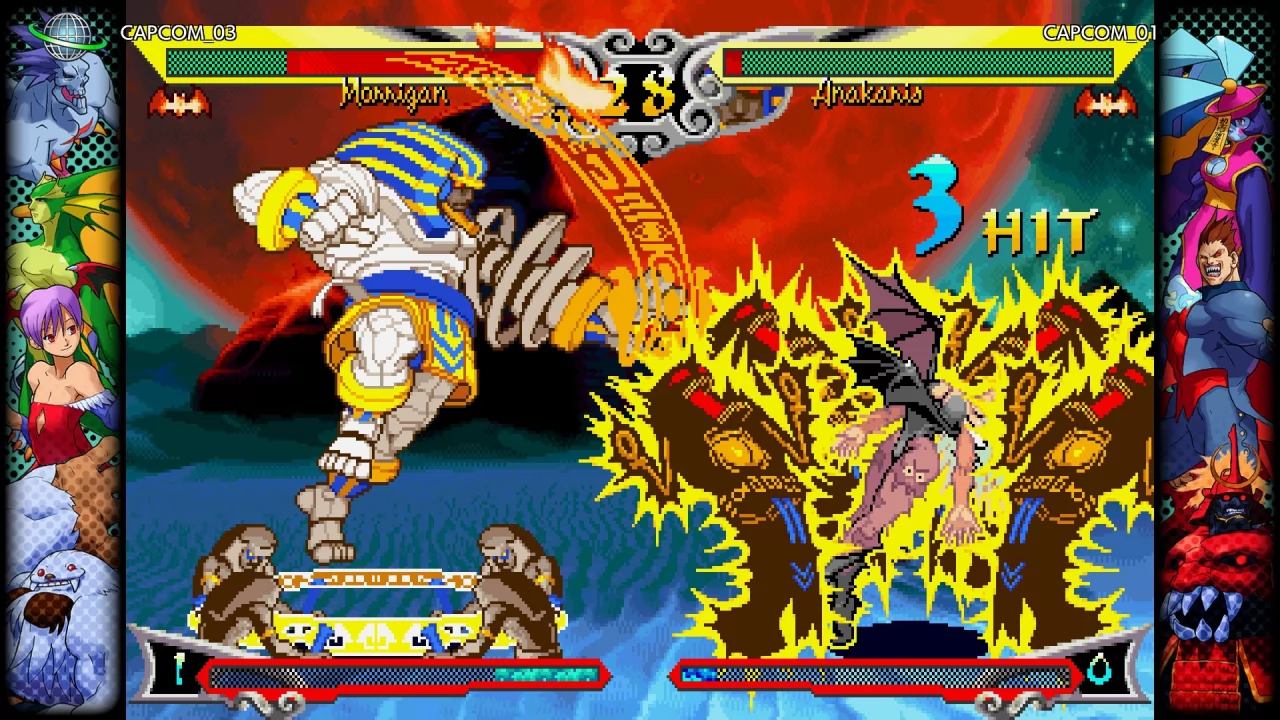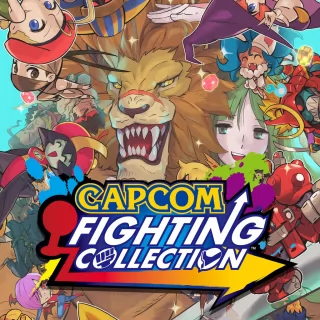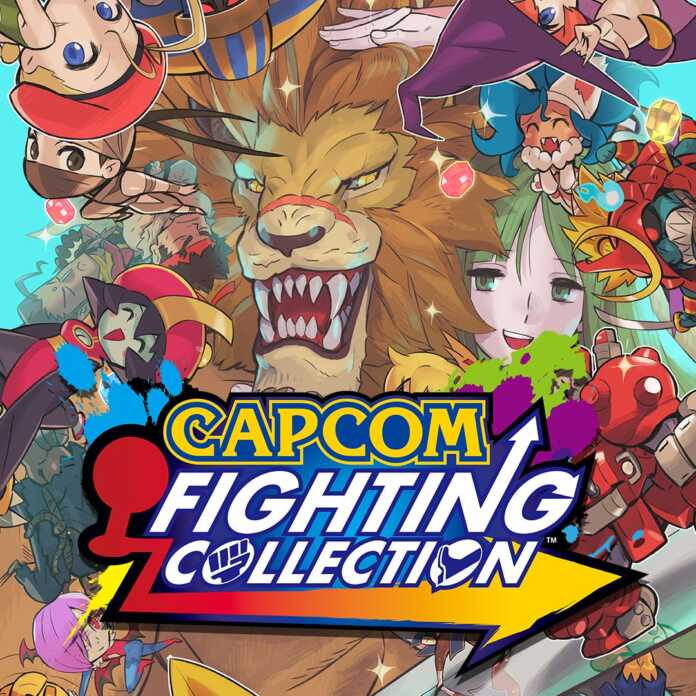Capcom Fighting Collection collects ten fighting games from the Osaka house including Darkstalkers and Cyberbots … as well as some Street Fighter games.
Every time an official collection dedicated to the most historic games of the big names in gaming comes out, we have the opportunity and the inspiration to reflect on the concept of preservation, authenticity and legality. This time it’s up to the Capcom Fighting Collection, a very refined selection of Capcom’s golden age fighting games (again talking about old glories of the Osaka house, here is the review of Capcom Beat Em Up Bundle). Before delving into the retrogaming philosophy, we can say it right away: it is a well-made collection, with an adequate technical realization and a rich amount of extra content that does the developers credit. When it comes to history, however, interesting issues arise.
Games
It is worth spending a few words on the selection of games. There are ten titles, of which five belong to the Darkstalkers saga, only one Street Fighter II (but in its definitive version, which allows you to use the characters with the movesets of all the revisions of the game), the best competitive puzzle of all time, that is Super Puzzle Fighter II Turbo, and three niche works, but no less valuable, such as Cyberbots, Warzard and Super Gem Fighter. The selection is excellent, but somewhat hybrid in purpose.


What is the purpose of this collection? Who is it for? The abundance of Darkstalker suggests an almost archival desire, also because all the revisions are included, touching the risk of redundancy (Vampire Hunter 2 and Vampire Savior 2 are in fact two different versions of the same game, with concrete but negligible differences for a more general public). As sensible as it may be, in this perspective the choice of having only one Street Fighter II, or even the omission of the entire Alpha front. Those who have never played at least 70% of the games on the list will discover a world of superfine digital punches, with spectacular pixel art, immortalized in one of its moments of maximum evolution, just before the arrival of 3D.
There are also features that wink at the competitive fighting community, with various bug fixes and a training mode that is inspired by the various mods born in the last ten years. To this is added an online component with rollback, which in the review phase seemed to us to behave in a manner comparable to the average of contemporary online fighting games.
In search of authenticity
If you want a collection of excellent fighting games to play on the sofa in company, or even to discover a new passion for the genre, the Capcom Fighting Collection is a great investment. But what if you are interested in preservation, precisely with a view to passing on the history of the video game to posterity?
The discourse is complex and has facets ranging from the practical to the philosophical. Let’s start with the concrete details: the games are reproduced to perfection (net of the difference of the screens, which obviously are no longer cathode ray tubes and can only be “emulated”), but have some significant differences. In Street Fighter II, Honda’s infamous level is depicted in its new version, the one that removes the rising sun flag, considered controversial in China and Korea due to the horrors associated with Japanese imperialism in the twentieth century.

Whether you like this choice or not, we can still draw a conclusion: the purest preservation, without modifications, cannot always pass through official channels. I understand very well why Capcom has decided to change that level, and it is indeed a choice that I share, but I can’t help but think that the original story of Street Fighter II is that of a game born in a different era, and that the cultural representation of that period is an interesting detail, perhaps worth preserving. A further major absence are the secret endings of Vampire Hunter and Vampire Savior, a somewhat bizarre choice.
The other violation of philological accuracy is much more welcome and demonstrates a commitment from Capcom that we cannot take for granted, especially considering the laziness of some retro collections. The games include several bug fixes that improve the experience, have options to reduce flashing lights (a crucial setting for accessibility, often one of the weakest points of retrogaming), and a new training mode.

The training falls short of the specialized tools developed over the years by the competitive fighting community, but it is a step in the right direction and a great addition. The selection therefore offers incredible games, virtually identical to the originals, but with some small omissions and a few extras. To play in company and to rediscover timeless classics it is perfect. For the “video game library of Alexandria“Instead, nothing beats the archives with the original Roma of the time, as mother Capcom had made them.
The extras
The additional content of the museum mode is nothing short of excellent. Capcom continues to do a great job of re-proposing the incredible illustrations it has donated over the years, also because they tell an important side of the story of the games in question. Here in Italy they came from afar, often with some missing pieces or bootleg cabinets, but in Japan they were part of current affairs and popular culture. Seeing the way Capcom promoted its characters, hiring enormously talented illustrators and illustrators, is a real pleasure.
Personally, I found the opportunity to see game design documents priceless, which in addition to satisfying the curious will prove to be a precious resource for anyone who wants to study this sector. From a learning perspective, even character sketches can prove to be valuable materials for aspiring character designers.

All this is accompanied by the incredible Capcom music of those years, collected in a comfortable player with an astounding amount of tracks. It would be nice if these top quality contents were accompanied by a few more historical notes, especially for the benefit of those who were not there and would also like to discover the cultural context that gave birth to certain pearls.
That said, the value of the collection is undeniable. There are many Darkstalkers, perhaps too many, a memorable Street Fighter and four pearls to discover, which perfectly embody the power, genius and strangeness of the Capcom of those years.

Capcom Fighting Collection
Version Analyzed PlayStation 4: Capcom packs a collection of exceptional games, with great features that make them more accessible and richer on the learning front. As always, the selection of titles does not make everyone agree, with an abundance of Darkstalkers, apparently the daughter of a philological intent, and a relative lack of Street Fighter, of which all the experiences after the second chapter are missing. The infinite beauty of Super Puzzle Fighter elevates any collection in which it is inserted and the presence of Warzard and Cyberbots allow you to explore the more bizarre and experimental side of Capcom. On a technical level, the online experience is adequate and in line with that of other fighting games, with slight differences on the latency front depending on the platform (the PC wins, Switch and Xbox work properly, while PS5 is the last on the list. ). If you want to rediscover or get to know the joy of two-dimensional beating for the first time, this is undoubtedly an excellent starting point.














